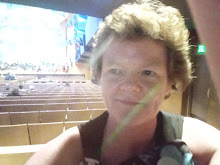Biology 101.
Pollination is the act of transferring pollen grains from the male anther of a flower to the female stigma. The goal of every living organism, including plants, is to create offspring for the next generation. One of the ways that plants can produce offspring is by making seeds. Seeds contain the genetic information to produce a new plant.
Flowers are the tools that plants use to make their seeds.
The basic parts of the flower are shown in the diagram below.
Seeds can only be produced when pollen is transferred between flowers of the same species. A species is defined a population of individuals capable of interbreeding freely with one another but because of geographic, reproductive, or other barriers, they do not interbreed with members of other species.

Parts of a flower.
 This wasp is a specialist pollinator of Penstemon, which is the flower it is visiting, or rather sleeping in here. Photo by Dr. Jim Cane, USDA ARS Bee Biology and Systematics Laboratory, Logan, Utah.
This wasp is a specialist pollinator of Penstemon, which is the flower it is visiting, or rather sleeping in here. Photo by Dr. Jim Cane, USDA ARS Bee Biology and Systematics Laboratory, Logan, Utah.
-------------------------
Spelling Correction to the Chart Above: It's "peduncle", not "penducle". And not every living organism shares the goal of reproducing itself. Some are content if other members of the species reproduce the next generation within a family. Better survival rates for all, sometimes, that way... Hth.
.
How does pollen get from one flower to another? Flowers must rely on vectors to move pollen. These vectors can include wind, water, birds, insects, butterflies, bats, and other animals that visit flowers.

0 Comments:
Post a Comment
<< Home